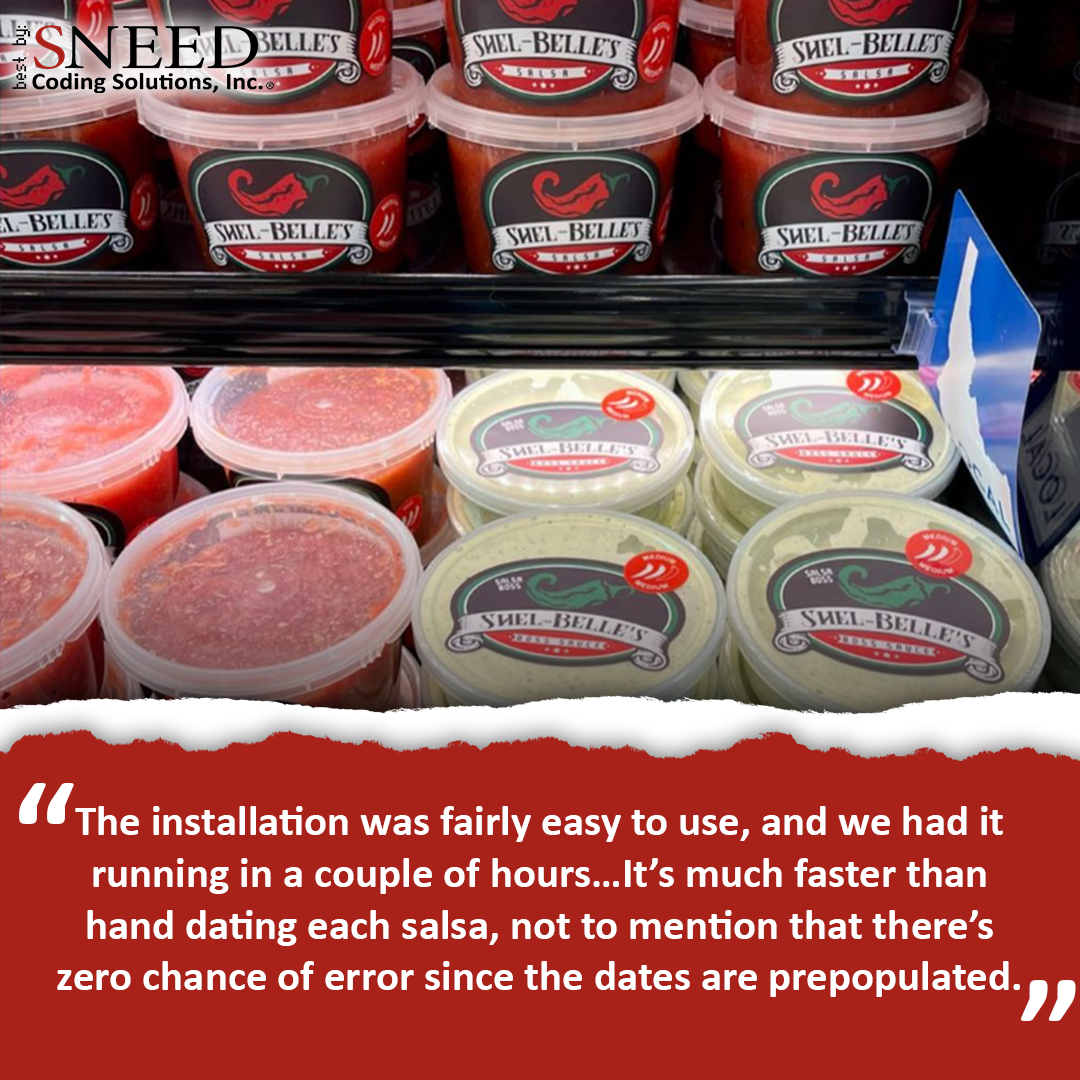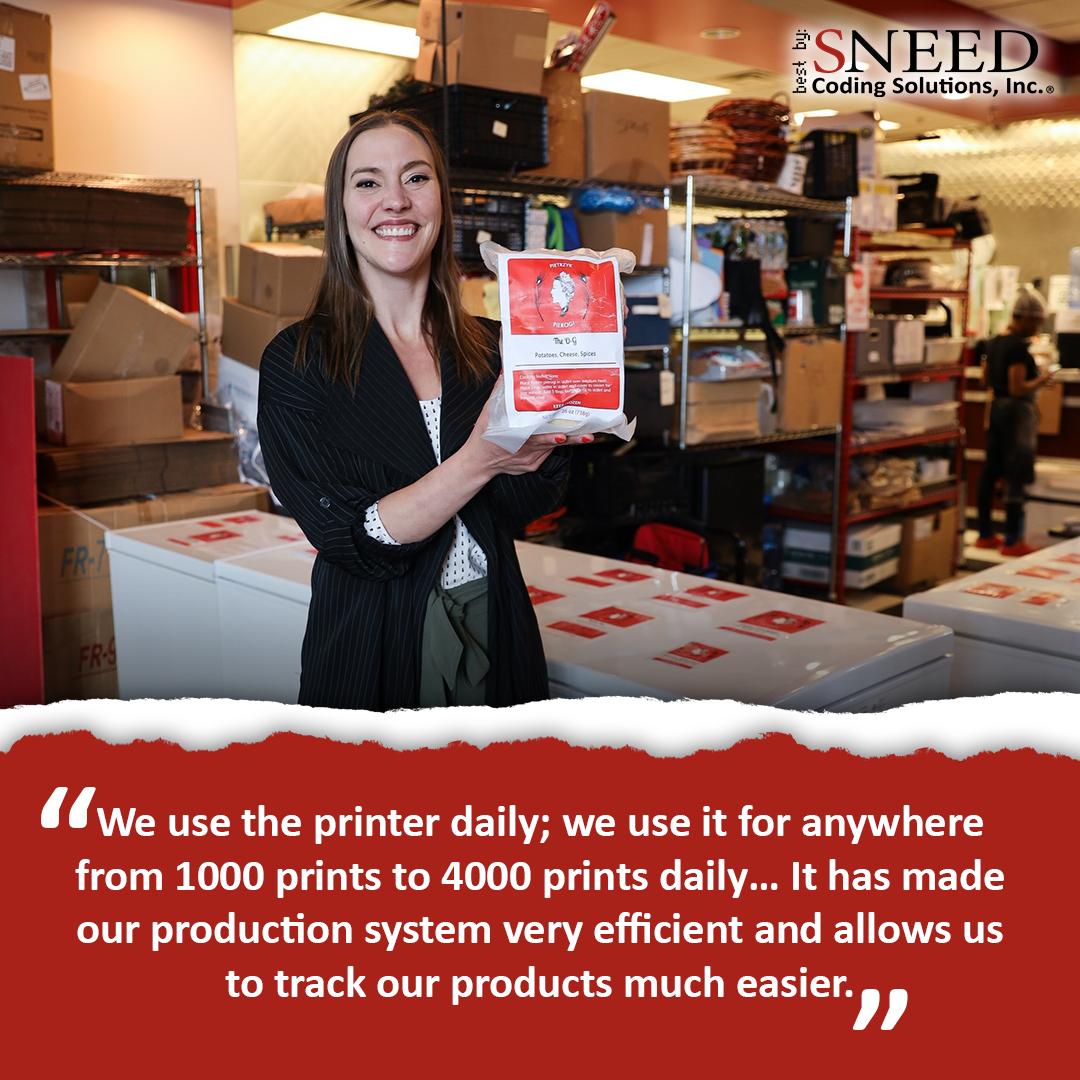How Making the Switch to SNEED-JET® Inline Printers Helped Mitchell Foods Thrive
In today’s competitive food industry, sourcing quality and fresh ingredients can be challenging, but Mitchell Foods excels in this area. Mitchell Foods supplies premium food products for the food service industry, with a core belief that using the freshest and finest ingredients is essential for creating extraordinary culinary experiences. They are committed to providing their customers with products that meet and exceed expectations, working with a network of trusted suppliers who share their dedication to excellence.
Read More
Topics:
Coding & Marking,
Success Story,
SNEED-JET Titan,
#KeepCodingSimple
From Peel-and-Stick Labels to Thermal Inkjet Printers, Making the Switch has Never Been Easier
Read More
Topics:
date code,
Success Story,
conveyor coding,
SNEED-JET Titan,
#KeepCodingSimple
Built by Hard Work, Improved by Simple Coding and Marking Equipment
Read More
Topics:
batch coding,
Success Story,
#KeepCodingSimple,
#FDACompliance
Which SNEED-JET® Printer Helped Add Batch Codes to Pietrzyk Pierogi?
Read More
Topics:
batch coding,
thermal inkjet coding,
Success Story,
#KeepCodingSimple,
#FDACompliance
Pioneers of Cold-Brew Coffee Concentrate and Keeping Coding Simple
To beat the scorching heat of summer, what could be more satisfying than indulging in a revitalizing cold brew from CoolBrew, the pioneering cold-brewed coffee concentrate? Established back in 1989 by the visionary pharmacist Phillip McCrory, CoolBrew's inception stemmed from his quest for a smoother, less acidic coffee experience, leading him to rediscover the cold drip process known for its popularity in New Orleans. Through meticulous experimentation, Phillip honed a method to craft a rich, velvety coffee blend, and he even designed a convenient bottle for effortless home serving.
Read More
Topics:
Success Story,
SNEED-JET,
SNEED-JET Titan,
#KeepCodingSimple,
Sustainable Packaging
Collect This Jackpot of Innovations: From SNEED-JET® and SNEED-PACK Solutions to Robotics, Sustainability, and More
Read More
Topics:
Pack Expo,
coding and marking,
Packaging,
sustainability,
Sustainable Packaging,
Innovative Solutions,
Robotics,
PACK EXPO Las Vegas 2023
A Deep Dive Into Green Trends That are Redefining Sustainability Practices Throughout the Industry
Observing the steadfast dedication of corporations to sustainability is truly remarkable. It underscores their commitment to safeguarding our planet's well-being. However, as we delve into our exploration of how industry leaders are transforming their practices, it's imperative to grasp that the journey toward sustainability commences long before the well-known "reduce, reuse, recycle" mantra becomes commonplace.
Read More
Topics:
Pack Expo,
#KeepCodingSimple,
Consumer packaging,
sustainability,
HowItsCoded,
HowItsPackaged,
Circular Economy,
Sustainable Packaging
From Brewmaster to Business Leaders: Soak in The Key Takeaways From the Women’s Conference
At PACK EXPO, the stage is set for discovering cutting-edge solutions, igniting innovation, and inspiring the next generation to enter the workforce. As I departed, my journey wasn't just marked by a heightened sense of inspiration; it also left me with a profound understanding of what it truly takes to thrive in industries like this one.
Read More
Topics:
Craft Brewer,
Craft brewing,
Pack Expo,
#KeepCodingSimple,
#KeepPackagingSimple,
Networking,
HowItsCoded,
HowItsPackaged,
CompanySuccess,
Entrepreneur
Cracking the Code to a Successful PACK EXPO Through Exhibits, Seminars, and Networking
As the anticipation for PACK EXPO grows, our dedicated Sneed team is diligently gearing up to ensure a successful venture. While our primary focus may revolve around our exhibition, rest assured our team members are poised to immerse themselves in the wealth of exhibits, seminars, and networking opportunities the event offers. The path to a fruitful experience demands good planning and research – a journey involving thoughtful consideration of chosen exhibits, targeted events, and enlightening seminars. While aimlessly wandering around is an option, our team, seasoned with wisdom, opts for a more strategic approach; we’re sure that their "My Show Planners" are brimming with curated selections.
Read More
Topics:
Pack Expo,
coding and marking,
#KeepCodingSimple,
We're Coding Everywhere,
trade show,
Networking,
small business
Top 5 PACK EXPO Resources to Help You Go From Novice to Navigator
Navigating the bustling aisles of a convention center during the opening day of an expo can be an exhilarating yet overwhelming experience. The surge of activity, the multitude of booths, stages, and halls can create a whirlwind that leaves even the most seasoned attendees feeling a bit lost. This sensation is particularly pronounced when stepping into an exposition of the monumental scale that PACK EXPO embodies. The diversity of business objectives amplifies the challenge – from those seeking coding and marking solutions to others in pursuit of packaging, labeling, filling, and manufacturing innovations.
Read More
Topics:
Pack Expo,
PMMI,
coding and marking,
SNEED Coding Solutions,
#KeepCodingSimple,
#KeepPackagingSimple,
We're Coding Everywhere,
Networking






.png)





